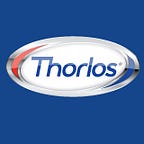A funny scene from the movie “Stripes” with Bill Murray has him comparing military leadership to a big toe: “I’m gonna volunteer my leadership to this platoon. An army without leaders is like a foot without a big toe. And Sergeant Hulka isn’t always gonna be here to be that big toe for us. I think that we owe a big round of applause to our newest, bestest buddy, and big toe… Sergeant Hulka.”
Off-the-wall humor notwithstanding, Murray had a valid point. The big toe (anatomical name: hallux) really is, in effect, the “leader” of the foot since it is the largest and most powerful of the toes.
While the toes on each foot are similar, there are two significant differences between the big toe and the other toes.
First is the size — the big toe is significantly larger in girth than the other four. Typically, it is also the longest (although it is not unusual for some people to have a longer second toe — a condition called “Morton’s toe”).
Second is the structure — The four other toes have three phalanges (the bones in the toes); but the big toe has only two phalanges, and they are typically slightly thicker and shorter than the phalanges of the other toes.
This difference in the big toe and the other toes serves a purpose: it is the primary toe that helps propel the foot in walking and running.
- During normal walking, the human foot turns into a “spring” to absorb about 1.5 times body weight at impact, and in less than ½ second becomes a rigid lever to propel the body forward.
- It repeats this function over and over, day after day, carrying us the distance of at least two times the circumference of the earth in an average lifetime.
The motion of a normal foot in walking involves two main phases: stance (when the foot is in contact with the ground) and swing (when the foot is not in contact with the ground). Normally the foot makes first contact with the ground in the heel area, then sets down in full contact with the ground to absorb the impact of each step. But then, in the blink of an eye, the heel lifts and the toes push off, propelling the body forward.
The last toe to push off is the big toe. This is also true in running, although there are some differences between walking and running that are worth noting:
(1) each step occurs more quickly in running (of course)
(2) there is a brief instance in running where both feet lose contact with the ground while in walking there is always one foot in contact with the ground (did you know that?).
While the big toe’s primary purpose is to help absorb impact in the stance phase and to propel the body forward at push-off and transition to swing phase, it is also important in a stationary state: A study published in 2009 in the Journal of Orthopaedic Research concluded that the big toe is important in static and dynamic standing balance.
So not only does it move us, the big toe helps us stay well-balanced while we’re standing.
The big toe certainly is quite important. While it is possible to ambulate without a functional big toe, that ambulation will be very less effective and efficient. Those who have conditions that affect the big toe may have to compensate (limp), undergo procedures to correct the conditions, or use assistance to help them walk (crutches, healing boots, etc.).
The most common conditions affecting the big toe include hallux valgus (bunions), hallux rigidus (a rigid, non-movable big toe), turf toe (a sprain of the ligaments in and around the big toe), gout, arthritis, bursitis, hammertoe, ingrown toenails, and sesamoiditis (a condition that affects the sesamoid bones, directly below the big toe).
Knowing all this, it’s hard not to acknowledge the big toe for its importance, and to be aware that we need to take care of it. To paraphrase Bill Murray, it’s our “bestest buddy.”
Rick is the Director of Outdoor, At-Work and Therapeutic Business Units for THORLO. He works with marketing initiatives, product development and all aspects of fulfilling consumer needs. He has a passion for connecting consumers with the right product to suit their specific needs allowing for optimal foot protection and ultimate enjoyment of their activities.
Rick also devotes a portion of his time as Research Director for the Institute for Preventive Foot Health, a not-for-profit corporation of which THORLO is a sponsor.
In his free time, Rick is an avid outdoor hiker and backpacker, also a paddler (canoe and kayak), and his exercise routine includes running, walking, hiking and strength training. “As an active participant, I have the privilege of testing many of our Thorlos products and providing first-hand feedback to our product development team”.
